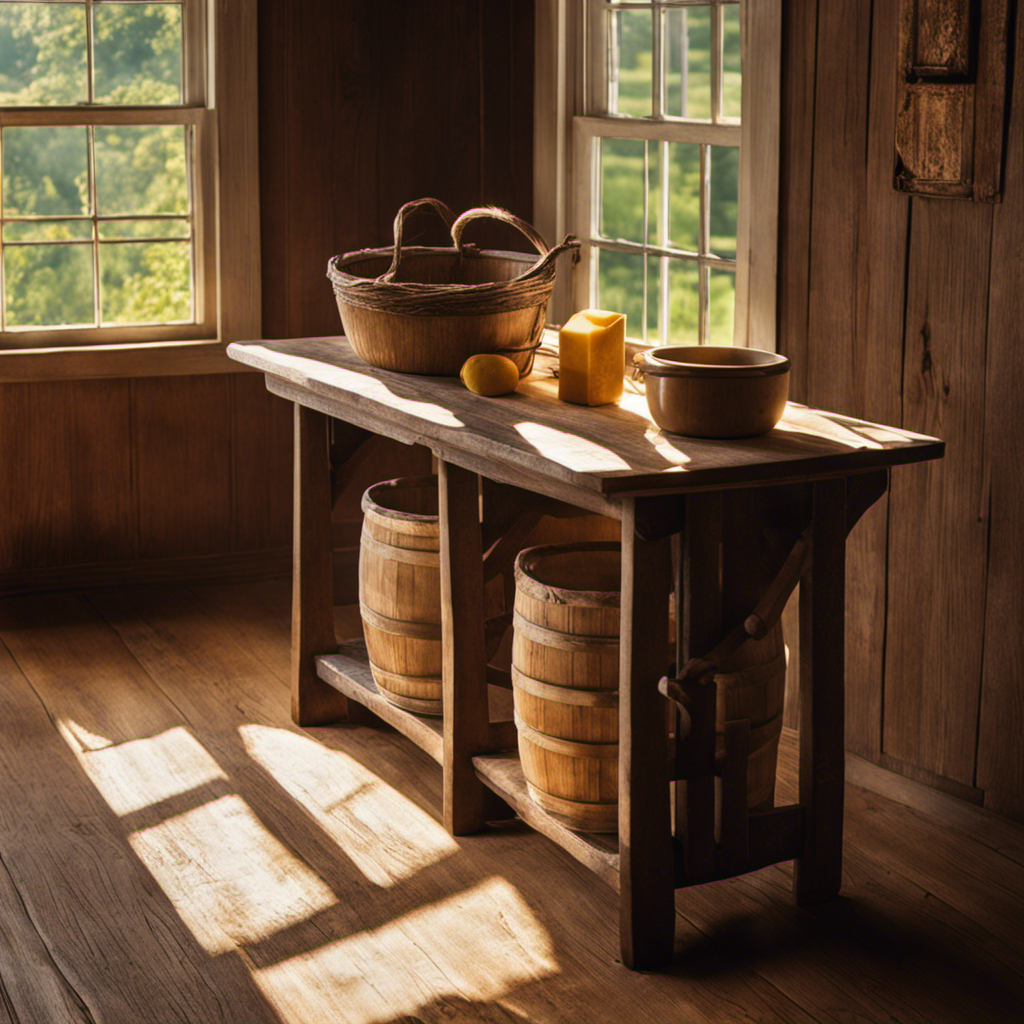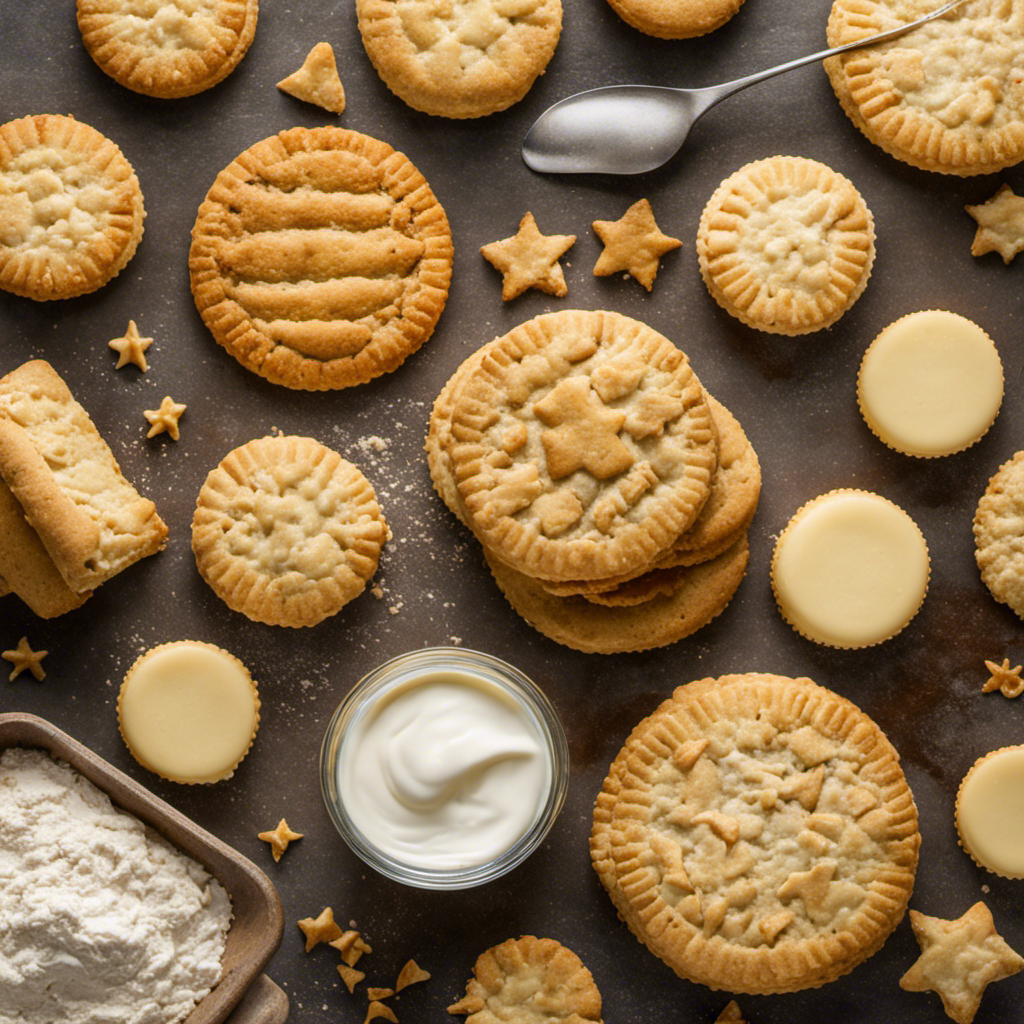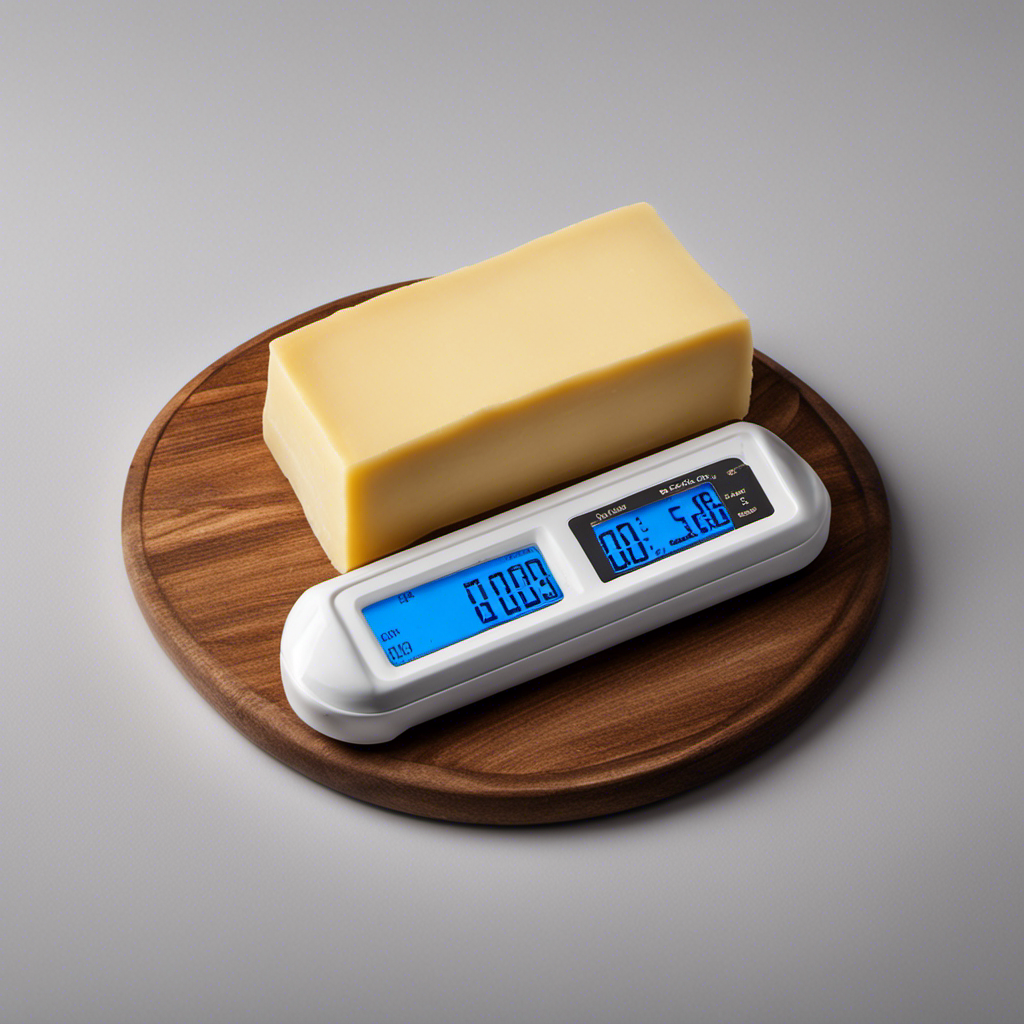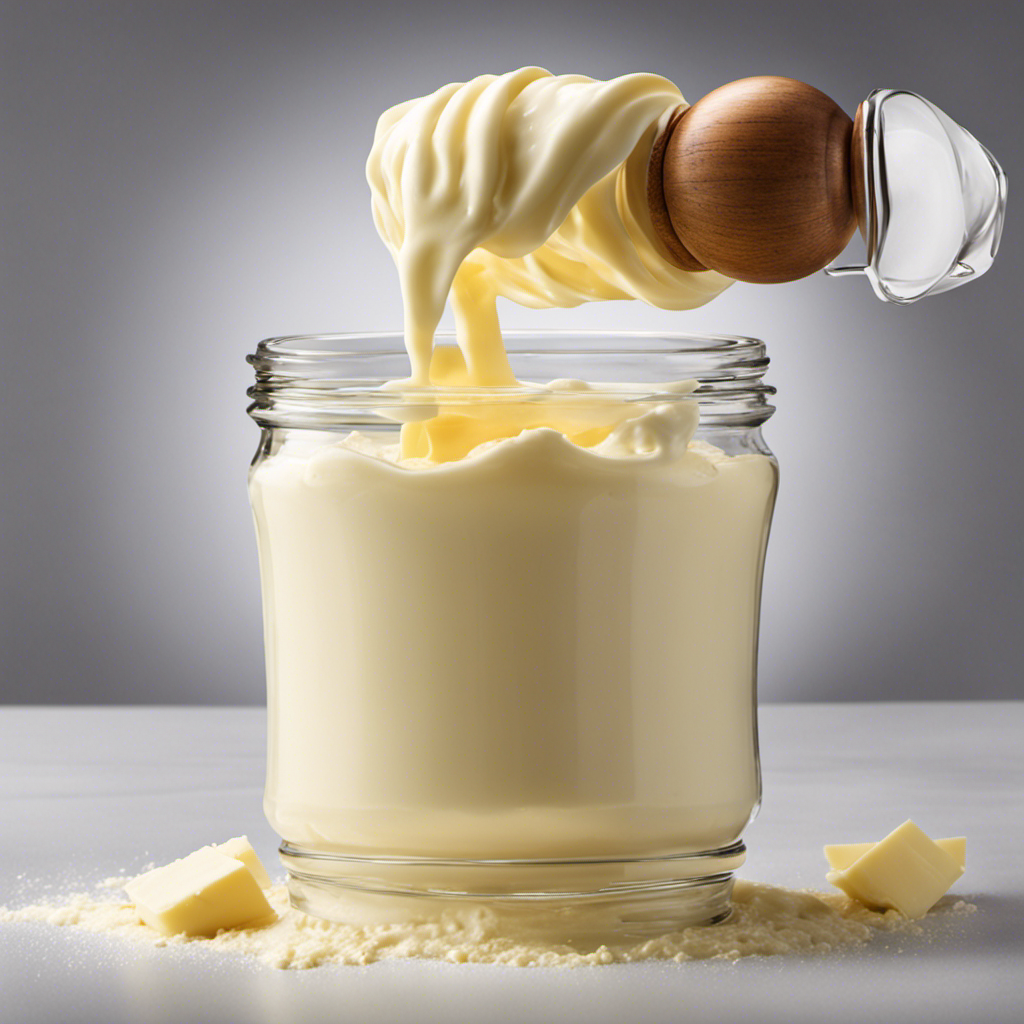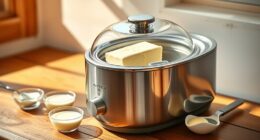I have a secret to reveal to you – creating Amish butter is akin to discovering a pot of gold in terms of flavor. While it may require some time and effort, the end result is absolutely worth it.
In this article, I’ll guide you through the steps of gathering the ingredients, churning the cream, straining the butter, and even washing and shaping it.
Get ready to elevate your cooking game with the rich, creamy goodness of homemade Amish butter.
Key Takeaways
- Different types of cream can be used for making Amish butter, such as heavy cream, half-and-half, or light cream.
- Churning techniques and churn types yield different results in butter consistency.
- Straining the butter with the right cloth is important for achieving the desired texture and quality.
- Proper washing and shaping techniques contribute to the quality and longevity of the butter.
Gathering the Ingredients
To make Amish butter, you’ll need to gather the necessary ingredients.
When it comes to the cream, there are different types you can use for making Amish butter. Some people prefer to use heavy cream, as it has a higher fat content, resulting in a richer and creamier butter. Others opt for lighter cream, such as half-and-half or light cream, for a lighter and milder taste.
Regardless of the type of cream you choose, it is essential to use fresh ingredients for Amish butter making. Fresh cream not only ensures a better flavor but also improves the texture and consistency of the butter.
Using fresh cream allows you to achieve the true essence of Amish butter, capturing its authentic and wholesome taste.
Churning the Cream
Start by pouring the cream into the churn and securing the lid tightly. Churning butter is a time-honored tradition that requires patience and technique. There are different types of butter churns available, each with its own unique benefits.
To effectively churn butter, consider the following techniques:
-
Continuous Churning:
-
This technique involves a constant and rhythmic motion of the churn handle, ensuring thorough agitation of the cream.
-
It requires consistent effort and stamina, but it yields a rich and creamy butter.
-
Intermittent Churning:
-
This method involves alternating between periods of churning and resting.
-
It allows the cream to separate into butter and buttermilk gradually.
Different types of butter churns include:
- Dasher Churns: These feature a long handle attached to a paddle-like dasher that moves up and down, creating a gentle churning motion.
- Barrel Churns: These consist of a barrel-shaped container with paddles inside, which are rotated manually or mechanically for continuous churning.
Straining the Butter
Using a fine mesh strainer, you can easily separate the butter from the buttermilk.
In the Amish tradition, straining the butter is an important step in the process of making Amish butter. The straining cloth used in this process plays a vital role in achieving the desired texture and quality of the butter. It helps remove any remaining buttermilk, ensuring the butter stays fresh for longer periods.
There are different methods of straining butter in the Amish tradition. Some prefer to use cheesecloth, while others opt for muslin or a specially designed butter muslin. Regardless of the material used, the straining cloth is placed over the strainer, and the freshly churned butter is poured onto it.
The strainer catches the buttermilk, allowing the liquid to drain away, while the butter remains in the cloth. This simple yet effective method ensures that the butter is pure, creamy, and ready to be enjoyed.
Washing and Shaping the Butter
After straining, you can wash the butter to remove any remaining buttermilk and shape it into desired forms.
Washing the butter not only helps in removing any traces of buttermilk, but it also helps in making the butter last longer. To wash the butter, place it in a bowl of cold water and knead it gently. The water will turn cloudy as the remaining buttermilk is released. Repeat this process until the water runs clear.
Once the butter is washed, it’s time to shape it into your desired forms. There are various shaping techniques you can use, such as rolling it into a log shape, pressing it into a butter mold, or simply forming it into a block.
Keep in mind that if you prefer a salted butter, you can add salt while shaping the butter. However, if you prefer unsalted butter, leave it plain.
Storing and Using Amish Butter
To store your fresh batch of butter, place it in an airtight container and refrigerate it to keep it fresh and ready for use. Storing Amish butter properly is crucial to maintain its quality and taste. Amish butter is known for its rich and creamy texture, making it a versatile ingredient in various recipes. Here are some effective storing methods for your Amish butter:
| Method | Description | Benefits |
|---|---|---|
| Refrigeration | Keeps the butter fresh and prevents spoilage | Extends the shelf life |
| Freezing | Preserves the butter for a longer period | Convenient for long-term storage |
| Butter Bell | Provides a cool and airtight environment for the butter | Keeps the butter soft and spreadable |
With properly stored Amish butter, you can enjoy its delicious flavor in a variety of recipes. From classic buttery pancakes to flaky pastries and mouth-watering buttercream frosting, Amish butter adds a rich and creamy touch to any dish. So, make sure to store your Amish butter correctly and explore the endless possibilities of using this wholesome ingredient in your culinary creations.
Frequently Asked Questions
Can I Use Store-Bought Cream to Make Amish Butter?
Yes, you can use store-bought cream to make homemade butter. The process is simple: just let the cream sit at room temperature for a few hours, then churn it until it separates into butter and buttermilk.
What Is the Difference Between Amish Butter and Regular Butter?
The difference between Amish butter and regular butter lies in the way it’s made and the nutritional benefits it offers. Amish butter is traditionally churned by hand, resulting in a richer, creamier texture and higher butterfat content. Its natural production methods also make it free from additives and preservatives.
Can I Add Flavorings or Herbs to the Amish Butter?
Yes, you can definitely add flavorings or herbs to your homemade Amish butter. It’s a great way to create flavored butter with a personal touch. Just mix in your desired herbs or flavorings during the churning process.
Can I Freeze Amish Butter to Extend Its Shelf Life?
Yes, you can freeze Amish butter to extend its shelf life. Freezing butter is a great way to preserve it for longer periods. Just make sure to wrap it tightly in plastic wrap or an airtight container to prevent freezer burn.
How Long Does It Take to Churn the Cream Into Butter?
When churning butter, achieving a smooth texture takes time and patience. It typically takes about 20-30 minutes of continuous churning. If you encounter issues, make sure the cream is at the right temperature and adjust your churning speed.
Conclusion
In conclusion, making Amish butter is a simple and rewarding process. By gathering fresh cream and following the traditional churning method, you can create a rich and flavorful butter that is perfect for cooking and baking.
Don’t forget to strain and wash the butter to remove any excess buttermilk, and shape it into a convenient form for storage.
Remember, as the old adage goes, ‘good things come to those who churn.’ So why not give it a try and enjoy the delicious taste of homemade Amish butter in your next meal?
